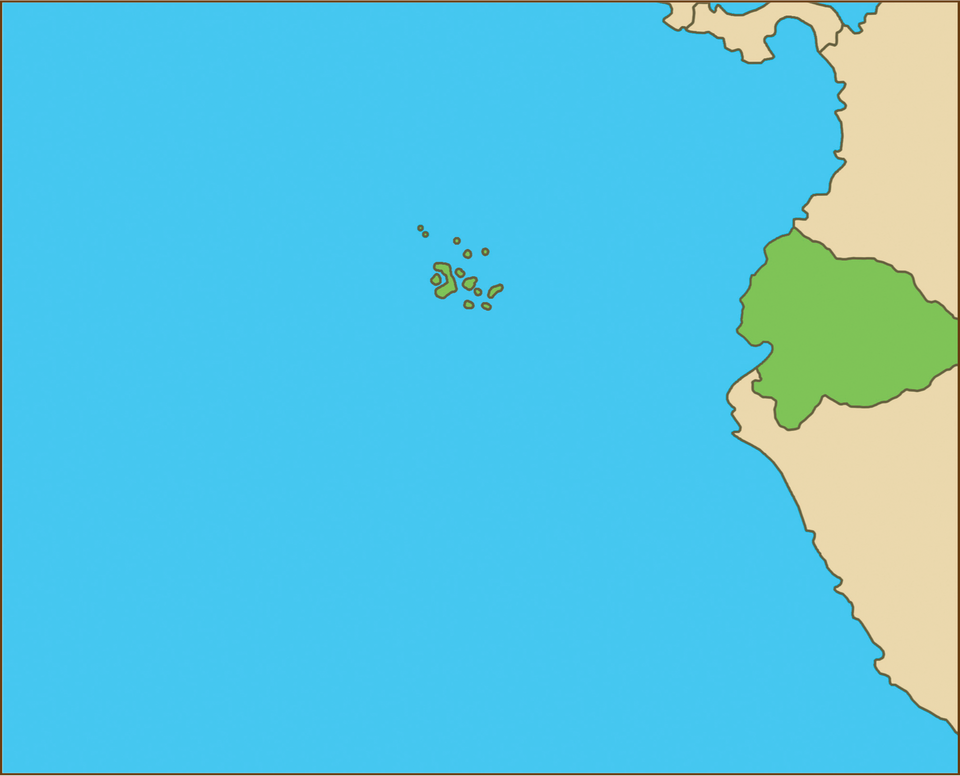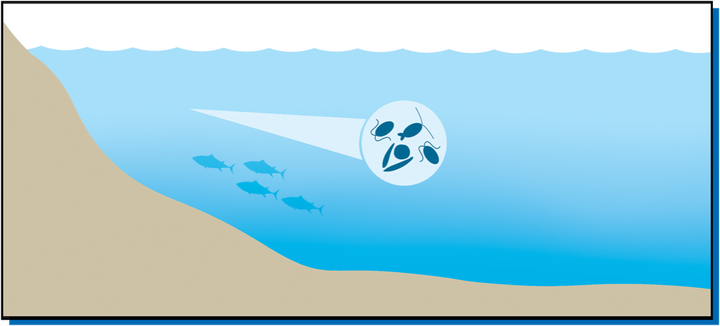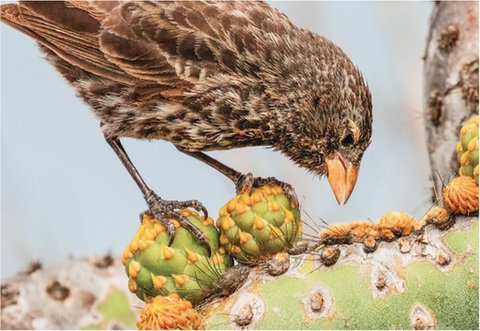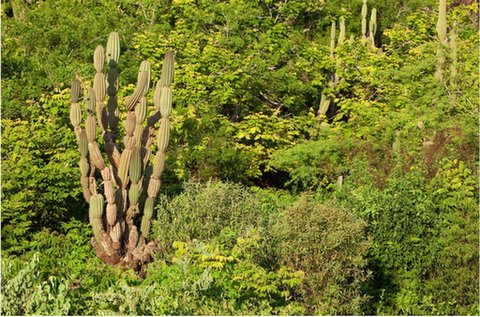CurrentsAreKing
Theislandsarenotspecialjustbecauseofhowtheyformed.Theyareteemingwithlifeinpartbecauseofwheretheyformed.TheGalápagosIslandssitattheintersectionofseveralmajoroceancurrents—somewarm,some cold.
Theclimateisdependentalmostentirelyonthesecurrents,whicheveroneisprevalentatthetime.Andthecurrents,inturn,areinfluencedbythewindsthatpush them.
Let’sstartwiththeHumboldtcurrent.ThismassiveoceancurrentsweepsnorthfromAntarcticaupthewesternedgeofSouthAmerica.Itcarriescold,nutrient‑richwateralongthecoastsofChileandPeru.Ithangsaleftwhenitreachesthe Galápagos.
TheHumboldtisadeep‑watercurrent.Togetherwithpowerfultradewindsitcreatesaneffectcalledupwelling.Thewindsblowingacrosstheocean’ssurfacepushwateraway.Waterrisesupfrombeneaththesurfacetoreplacethewaterthatwas pushed.
Upwellinghelpscreatearichmarineecosystem.Asoceanorganismsdie,theysinktothebottomanddecompose.Thedeepseabecomesfilledwithnutrients.Upwellingbringsthedeep,coldwatertothesurface.Thenutrientsprovidefoodformicroscopicorganismscalledphytoplankton.Phytoplanktonareakeypartoftheoceanfoodchain.Marineanimalsfeaston them.

Cromwell current
PeruOceanic current
SouthEquatorial current
Humboldt current
PACIFIC OCEAN
GALÁPAGOS
ISLANDS
ECUADOR
SouthAmerica
Panama current

Coldwaterwithmorenutrientsrisesuptoreplacewaterthatispushed away.
Surfacewindspushwaterawayfromthe land.
phytoplankton
UPWELLING
Strongwindsmixwithdeepcurrentstocreateupwelling.Theoceanbecomesplentifulwith food.
WhenCurrentsCollide
FromMaythroughDecember,theHumboldtcurrentcollideswiththewarm‑waterPanamacurrent.The PanamacurrentflowssouthwardfromCentralAmerica.Whenthesetwo,dominantcurrentsmeet,theycreateacoolmistknownaslagarúa. Cloudscondenseovertheislandsandfallasmistinthehighlands.Fromtheocean,theislandsseemto disappear!
Meanwhile,theCromwellcurrentapproachesfromthewest.Ittravelsalmost13,000kilometers(8,000miles)acrossthePacificOceanfromHawaii.Thecurrentslamsintotheislands,upwells,thenswirlsaroundthem.LiketheHumboldt,theCromwellisadeep‑water,coldcurrent.Itcarriesnutrientstothesurfacetofuelthemarinefood chain.


cactus finch

mistandfogaroundIsabela Island
VirtuallyalloftheGalápagospenguinsandfursealslivealongthewesternshoresofIsabelaandFernandina,wheretheupwellingisstrongest.Thewateriscoolerhere, too.
Atthesametime,theSouthEquatorialcurrentflowseasttowestthroughtheGalápagos,alsopushedbytradewinds.Thiswarm‑watercurrentisthemajorsurfacecurrentinthetropical Pacific.
AroundDecember,thesoutheasttradewindsslowdown.TheycannolongerdrivetheHumboldtcurrenttowardtheGalápagos.ThewarmPanamacurrentbecomesdominantthroughMay.Insomeyears,thisbringshighhumidityandheavytropicalrainsthatcanusherintheEl Niño current.
ThewatersandcurrentsmovingaroundGalápagosIslandssupport life.
DisruptiveForce
Wait.ElNiñocurrent?There’sanotheroceancurrent?Notreally.TheElNiñocurrentonlyformsundercertainconditionseveryfewyears.Thiscurrentaffectsweatherpatternsbybringingmorerainandpotentialflooding.Itcanlastformonthsata time.

ElNiñocanbenefitplantlifeontheislandsbybringingrain.This,inturn,leadstopopulationboomsforanimalsthateat plants.
DuringaharshElNiño,theHumboldtcurrentiscutoffandtheupwellingthatnormallytakesplacecan’thappen.Thatmeansthereisn’tenoughfoodforseaanimals.Sealions,penguins,andmarineiguanasdieingreatnumbers.Manyseabirdsfailtorearyoung.Itcantakeyearsforsomepopulationstocomeback.Atthesametime,theabundantrainfallcanmakethenormallydrylowlandsgreenandlush.Landanimalsandsmallbirdslikefinchesthen flourish.
ItisaremindertousthattheGalápagosareaplacewherenatureisfightingtostayinbalanceatalltimes.Itisaplacethatwasbornoffire.Itisfueledbywindandwater.Itisfullof life.